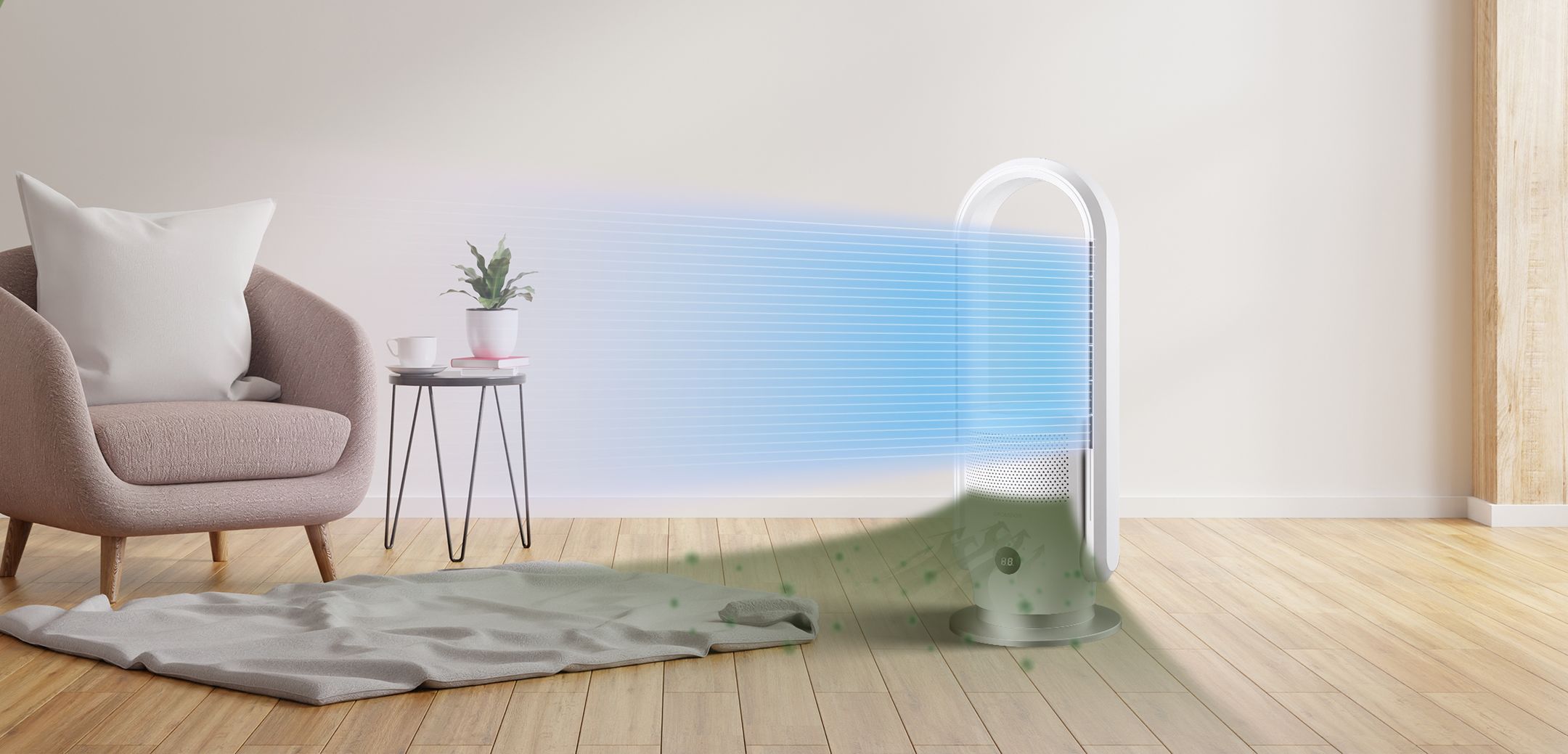
Get A Quote
Are Bladeless Fans Better For Allergies?
With air pollution on the rise, whether you live in the city, the suburbs or the countryside, air pollution is a problem we need to address. These pollutants are already taking a toll on those who breathe it, and dealing with them can be even more difficult for those who are prone to allergies. There are many products that purify indoor air, but today we're going to talk about whether bladeless fans are better for allergy sufferers.
Why Does using a Fans Aggravate Allergy Symptoms?
In the summer heat, many people fall asleep with a fan on. When the quality of your air environment is poor, regular fans can blow up allergens such as dust and pollen, causing an increase in the amount of pollutants in the air, which can make people with allergy and asthma symptoms uncomfortable. Air pollution can have a direct impact on allergens, such as damaging the outer walls of pollen grains, which increases the risk of pollen allergy by exposing allergen molecules more widely.
In addition to this, air pollution can cause damage to the mucous membranes of the airways, which can make it easier for allergens to enter the immune system. Causes allergy symptoms to worsen.
How Do Bladeless Fans Work?
Bladeless fan is actually not no blades, just no exposed blades, in the base of the fan inside, there is an impeller, driven by the motor, can be from the bottom of the air intake intake, the airflow with the internal special design of the air ducts to accelerate, from the ring of air outlets to spread, to produce a wide range of sustained and uniform wind power.
How Bladeless Fans Reduce Allergy Risk?
Reduced dispersion of suspended airborne particles: While traditional bladed fans may stir up airborne dust, pollen, and other allergens, bladeless fans produce a softer airflow that doesn't spread these particles as widely.
Uniform Airflow: Bladeless fans generate airflow through a special design of the fan housing and the rotation of the motor, a design that produces a more even and gentle airflow without the sharp variations in airflow that traditional fans produce. This even airflow may reduce the spread of allergens and the chance of exposure.
Reduced disturbance of indoor air: Bladeless fans typically produce less airflow noise and therefore may be better suited for indoor use without disturbing dust and other allergens in the room.
No wind shifts: Bladeless fans have a more even airflow and do not create wind shifts like traditional fans, which may reduce a person's direct exposure to the wind, thus reducing allergy symptoms.
Smooth surfaces and edges: Bladeless fans are often designed with a smooth exterior, with no protruding blades or other edges, which is designed to reduce the number of hiding places for dust and other allergens, making cleaning easier.
Simplified internal structure: Traditional bladed fans have a complex internal structure with blades, mechanical connections, etc., all of which are hiding places for dust and other allergens. In contrast, bladeless fans often have a more simplified internal structure, with only a motor and fan housing, reducing the number of areas where allergens can collect.
Overall, the relatively simplified and easy-to-clean structural design of bladeless fans can help reduce allergy symptoms by reducing the accumulation and spread of allergens. However, whilst these design advantages can provide a degree of assistance, for specific allergens, such as dust mites, other measures are still required to minimise allergic reactions.
Bladeless fans with air purifiers can effectively reduce allergy risk
When the bladeless fan with air purification function draws dirty air into the room, it will pass through HEPA filter, UV sterilisation and activated carbon filter, leaving dust, pollen and other allergens inside the machine, blowing out fresh and clean air and reducing the occurrence of allergy symptoms.
HEPA filter: The HEPA filter of the bladeless fan consists of two parts and is mainly used1 to capture dust and various suspended matter as small as 0.1 micron, which can purify 99.97% of viruses bacteria and other pollutants. Its closed design effectively prevents leakage of pollutants and avoids secondary pollution.
UV Sterilisation.: Bladeless fans with UV germicidal lamps are usually installed inside the machine and kill residual bacteria and viruses. And it won't affect some people who are allergic to UV light.
Activated carbon filter: The activated carbon filter adsorbs benzene, nitrogen dioxide, formaldehyde and other harmful gases. It removes odours, which is helpful for allergic rhinitis sufferers, and reduces the smell of paint, smoke and other pungent odours.
Negative ion purification: The CROSSBOW bladeless fan also has the function of anion purification, which is able to adsorb tiny particles such as bacteria, viruses, and dust into bigger particles. As the gravity of these particles increases, they become larger particles when they settle to the ground, thus purifying the air.
Conclusion
Bladeless fans with air purification are more suitable for allergy sufferers than fans without purification. Allergy sufferers also need to clean their bladeless fans regularly to ensure that the machine has good air purification. For more information on how to clean a bladeless fan, see How do I clean a bladeless fan?

